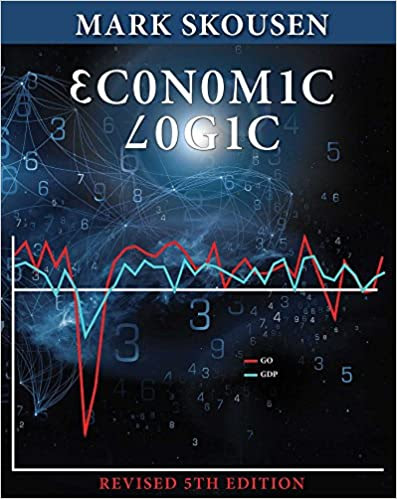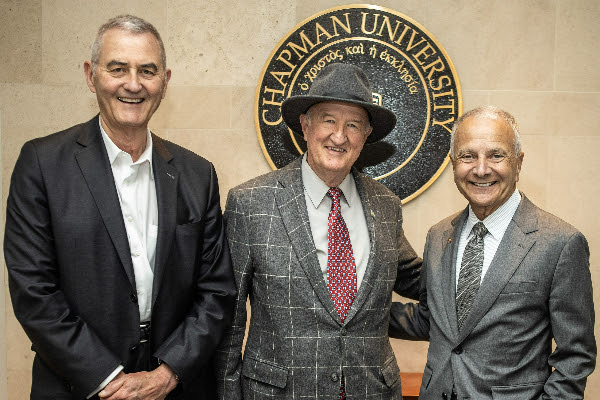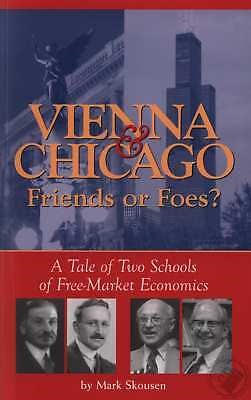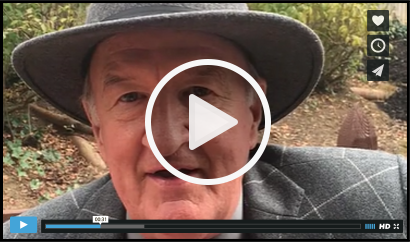Is the Recession Over? Is the Bear Market Over? This New Statistic Tells All
“GDP is the X-ray of the economy; GO is the CAT scan.” — Steve Forbes
Yesterday, the Wall Street Journal published my op-ed, “Recession Fears May Not Pass GO.”
The Journal editors have published four of my articles on gross output (GO). They recognize it’s a vital new statistic that everyone should know about.
If you subscribe to the Journal, you can read the online version.
GO stands for “gross output,” which measures spending by consumers, businesses and government at all stages of production.
Gross domestic product (GDP), on the other hand, measures final output only, and leaves out over half the economy, the part that business spends on moving the production process along the supply chain.
I make the case that GO does a better job than GDP of describing what’s really going on in the economy and can actually predict where the economy is headed in the future.
Right now, there’s a big difference. While the government reports that real GDP has declined over 1% during the first half of 2022, suggesting a mild recession, real GO actually rose 2.0%, and maybe even more, thanks to robust growth in business spending in the supply chain.
I see that economists are now predicting that the third-quarter real GDP will grow at 2.5%. Their forecast confirms what GO has been saying: the U.S. economy slowed in the first half of 2022 but is not in an actual recession.
More investors on Wall Street are realizing that, and the market has shown a sharp recovery.
The Story Behind GO
I’ve been advocating GO since writing my magnum opus, “The Structure of Production” (New York University Press, 1990).
Finally, in April 2014, the Bureau of Economic Analysis (BEA) agreed with me and started publishing GO as the “top line” in national income accounting every quarter along with GDP as the “bottom line.”
A Paradigm Shift in Economics
I consider it a real breakthrough. GO is the missing piece of the macroeconomic puzzle.
It is a “paradigm shift” in economics that will give us a more complete picture of what is happening in the economy. As Thomas Kuhn, who developed the concept of a paradigm shift in his book “The Structure of Revolutions,” states, “When the transition [to a new paradigm] is complete, the profession will have changed its view of the field, its methods, and its goals.”
But, as Kuhn warned, a paradigm shift involves opposition. The establishment resists change.
“No part of the aim of normal science is to… invent new theories, and they are often intolerant of those invented by others,” Kuhn said.
Many of my academic papers on GO have been rejected by the economics establishment. Fortunately, the Wall Street Journal is an exception and has given me a vehicle to make the case for GO as the “top line” in national income accounting.
Private economists such as David Ranson of HCWE, Inc., and Jerry Bowyer of Bowyer Research use GO to forecast the economy and the markets.
Gradually GO is being mentioned in the economics textbooks, including “Economics Today” by Roger LeRoy Miller and “Economics” by McConnell Bruce Flynn. Sean Flynn, the chief writer of the latter textbook, is a big fan of GO.
But there is only one textbook that so far has fully integrated GO into national income accounting chapters — and that’s mine, “Economic Logic,” now in its fifth edition and published by Capital Press.

Click here for a description of “Economic Logic.”
Steve Forbes writes, “His book Economic Logic demonstrates Mark’s ability to look at the whole economy, the real world and real people. This rigidity between micro- and macroeconomics is not for him. He realizes they’re all connected together. He began this book with a profit-loss income statement to demonstrate the dynamics of the real-world economy. No other textbook does that. He gets it.
“And extraordinarily, Mark’s book brings in many other disciplines to teach lessons of economics, underscoring crucial lesson, whether it is history, sociology, finance business or marketing management. He recognizes that this rigidity may be nice for departments created at universities.”
Most economics textbooks cost $100 to $200. But you pay only $35 by going to www.skousenbooks.com. I pay the postage if mailed within the United States.
Honored to Become the First Doti-Spogli Chair at Chapman University
Chapman University has issued this press release: “First Appointment Made to Doti-Spogli Chair in Free Enterprise at Argyros School.”
“Chapman University Presidential Fellow Mark Skousen has been named the first Doti-Spogli Chair in Free Enterprise at the Argyros School of Business and Economics.”

Former U.S. Ambassador Ron Spogli, left, new Doti-Spogli chairholder Mark Skousen and Chapman University President Emeritus Jim Doti.
Creation of the endowed chair was announced in May and is supported by a donation from former U.S. Ambassador Ron Spogli. The one-year, renewable appointment — co-named in honor of Chapman president emeritus and economist Jim Doti — recognizes a faculty member whose research or outreach spotlights the benefits of economic freedom and the policies that extend it.
“I am deeply honored by this appointment and the faith that Dr. Doti and Ambassador Spogli have placed in me to promote free enterprise through teaching, lectures, book writing and giving awards,” Skousen said. “I look forward to teaching classes at Chapman that encourage a positive view of free enterprise, and to arrange for the faculty and student awards each year.”
Skousen was named a Presidential Fellow in 2014. As Doti-Spogli chairholder, he will develop and teach a course introducing students to fundamental texts and exploring the impact of free enterprise. Additionally, he will administer and award the annual Doti-Spogli Student Prize and the Doti-Spogli Faculty Prize for contributions to the advancement of free enterprise.
“We are pleased that our students will have the opportunity to learn free enterprise principles as part of their education at Chapman, thanks to the Doti-Spogli Chair,” said Argyros Dean Henrik Cronqvist.
For more than 40 years, Skousen has been editor of Forecasts & Strategies, an investment newsletter. He taught economics and finance at several universities before coming to Chapman, where he won the “My Favorite Professor” Award in 2019. He has been a corporate consultant and written op-eds for Forbes, the Wall Street Journal and other outlets.
Doti met Spogli in Italy, where the latter served as ambassador in the mid-2000s, and a friendship rooted in intellectual discourse bloomed. Spogli is the co-founder of Freeman Spogli & Co., one of the leading middle market private equity investors in the United States. When the ambassador decided he wanted to support Chapman, Doti suggested the idea of establishing an endowed chair.
Good investing, AEIOU,
![]()
Mark Skousen
You Nailed It!
Milton Friedman and Friedrich Hayek: Were They Friends or Foes? A Surprising Announcement
“Yet the Nobel Prize awards documented the beginning of a great shift toward a renewed belief in the superiority of markets… the eventual victory of this viewpoint was really a tale of two cities — Vienna and Chicago.” — Daniel Yergin and Joseph Stanslaw, “The Commanding Heights” (1998)
In 2005, I wrote a book called “Vienna and Chicago: Friends or Foes? A Tale of Two Schools of Free-Market Economics.”

In the book, my favorite economists were Friedrich Hayek (1899-1992) from the Austrian school and Milton Friedman (1912-2006) from the Chicago school.
I dedicated my textbook, “Economic Logic” to both as the intellectual giants of the 20th century.
In “Vienna and Chicago,” I noted that Hayek and Friedman agreed on many things — both championed private property, free trade, the invisible hand doctrine of Adam Smith and limited government, and were opposed to wage-price-rent controls, socialist central planning and Marxist exploitation theories of capitalism.
But they strongly disagreed on methodology, fiat money, the gold standard and the theory of the business cycle, among other areas.
As Milton Friedman once told me, “We were friends and enemies!”
It was the clash of the titans.
At the end of the book, I made a prediction that over time, the bridge between the Austrian and Chicago schools would come together rather than move apart, as they exchanged ideas and tested their theories.
Guess what? My forecast just came true!
Last month, I was informed that the University of CEMA in Buenos Aires, Argentina, has done a novel thing: Joined together the two prominent leaders of the Austrian and Chicago schools of economics, Friedrich Hayek and Milton Friedman, into the Friedman–Hayek Center for the Study of a Free Society.
UCEMA is a prestigious university that specializes in undergraduate and graduate courses in economics, business, finance and politics, with campuses in Buenos Aires and Mendoza.
Last month, representatives of the Friedman-Hayek Institute interviewed me, and I congratulated them on bringing together these two great schools of free-market economics.
If you want to know more about the Institute, click here.
For a copy of my book, “Vienna and Chicago, Friends or Foes?”, the price is only $20 postpaid (if mailed in the United States): www.skousenbooks.com.
Art Laffer said of the book: “I don’t know whether I should love you or hate you. Your book was so good I spent half a day plus avoiding what I was supposed to do in order to read your book. It’s great!”

